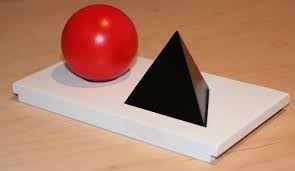
This video lesson is designed for 3-6-year-old children to teach them what nouns and verbs are, how to identify them, and their usage using Montessori Grammar symbols.
Nouns and Verbs are building blocks of learning the language. We cannot imagine any sentence without them. As a result, learning grammar as a discipline helps children gain a deeper understanding of written and spoken language. It helps them to master and manipulate it in their own communication. Let us understand the meaning of nouns and verbs.
What is a Noun?
A noun is a word that represents a person, place, thing, or idea. Nouns can be concrete, such as “table,” “book,” or “car,” or abstract, such as “love,” “happiness,” or “freedom.” They can also be singular or plural, and they can be either common or proper. Common nouns refer to general items, while proper nouns refer to specific people, places, or things. For example, “book” is a common noun, while “Harry Potter” is a proper noun.
What is a Verb?
A verb is a word that expresses an action, occurrence, or state of being. Verbs are necessary for constructing sentences that convey meaning.
There are three types of verbs: action verbs, linking verbs, and helping verbs.
- Action verbs indicate a physical or mental action. Examples include run, jump, think, and believe.
- Linking verbs act as an equal sign between the subject and the predicate of a sentence. Examples include is, am, are, was, and were.
- Helping verbs are used to form verb phrases that convey various tenses and moods. Examples include can, could, may, might, shall, should, will, and would.
Verbs can also be transitive or intransitive. Transitive verbs require a direct object to complete their meaning, while intransitive verbs do not. For example, “throw” is a transitive verb because it requires a direct object such as “the ball.” In contrast, “run” is an intransitive verb because it does not require a direct object.
Understanding the difference between these two parts of speech (nouns and verbs) is crucial for constructing sentences and conveying meaning effectively.
What are Montessori Grammar Symbols and How Does it Help a Child?
In Montessori education, grammar symbols are a set of visual aids that are used to teach grammar concepts to children. These symbols are called Montessori Grammar Symbols. Each symbol represents the different parts of speech, including nouns, verbs, adjectives, pronouns, prepositions, conjunction, and article. The symbols are designed to be simple and easy to understand, which allows children to grasp complex grammar concepts more easily. This practical approach helps children understand concepts without confusion. It also enables them to decode and code sentences more clearly.
Purpose of Montessori Grammar Symbols
The purpose of these early grammar lessons is to teach children how to associate the nomenclature of grammar with the use of specific parts of speech. Grammar lessons, like all Montessori materials, help children at their developmental stage and engage them based on their own innate curiosity.
How Nouns and Verbs are Introduced to the Children in a Montessori Classroom?
Grammar lessons are introduced in the Montessori Early Childhood classrooms, as a tactile experience that connects grammar to physical experiences. For instance, the Noun Lesson comprises a series of slips of paper that need to be matched to a set of small objects. When matching the objects and labels, the teacher tells the child, “Nouns are the naming things.” Then the nouns are introduced with a Montessori grammar symbol that is a large black triangle.
The Verb Lesson begins with a simple game of charades, in which children act out the verbs on a set of cards. Then the verbs are introduced with a Montessori grammar symbol that is a large red circle. Children practice combining these symbols to represent simple phrases and sentences, ensuring that each symbol has a place in their analysis.
This video lesson uses word cards and helps the child learn how to differentiate between a noun using Montessori grammar symbols. It helps children learn to dissect and analyze literature and speech as their own discipline, analyze communication, and create elegant writing.
Watch the video to learn how to identify and distinguish words between nouns and verbs using Montessori grammar symbols.
Related Resources
To watch more Montessori video lessons, click here.
Video Created by: Joanne Shango
FAQs
- What are the three types of verbs?
The three types of verbs are action verbs, linking verbs, and helping verbs. Action verbs indicate a physical or mental action, linking verbs act as an equal sign between the subject and predicate of a sentence, and helping verbs are used to form verb phrases that convey various tenses and moods.
- What is the difference between a noun and a verb?
A noun is a word that refers to a person, place, thing, or idea, while a verb is a word that expresses an action, occurrence or state of being. In a sentence, a noun is typically the subject or object of the verb.
- How to identify nouns and verbs in a sentence?
To identify nouns and verbs in a sentence, look for words that represent a person, place, thing, or idea (nouns) and words that represent an action or state of being (verbs). For example, in the sentence “The dog chased the cat,” “dog” and “cat” are nouns, while “chased” is a verb.
Tags
- English
- grammar
- Language
- primary






